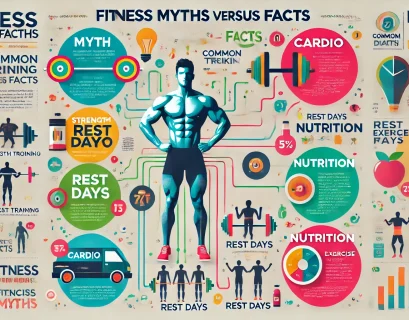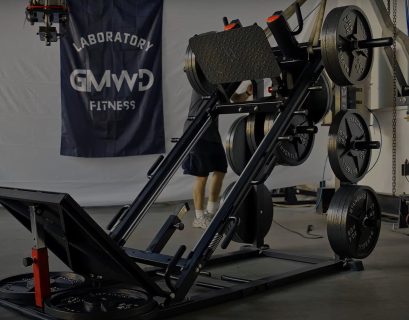In the world of strength training, a power rack (also called a squat rack or power cage) is one of the most versatile and essential pieces of equipment. Designed to provide a stable and safe environment for weightlifting exercises, a power rack is an invaluable asset in both home and commercial gyms. This guide will walk you through everything you need to know about power rack at https://gym-mikolo.com, from their benefits to choosing the right one for your workout space.
What is a Power Rack?
A power rack is a sturdy, cage-like structure made from steel that holds weights and provides support for performing heavy lifting exercises like squats, bench presses, and deadlifts. Equipped with safety bars and adjustable J-hooks, it enables users to safely work out without a spotter by catching the barbell if they lose control or need to release it quickly.
Key Features of a Power Rack
Power racks come with various features, each adding versatility and safety to your workout routine. Here are some standard components:
- Adjustable J-Hooks
J-hooks hold the barbell and are typically adjustable so that users can set them at the desired height for different exercises. - Safety Bars or Spotter Arms
Safety bars prevent the barbell from falling too low if you fail to complete a lift, minimizing injury risks. - Pull-Up Bar
Many power racks come with a built-in pull-up bar, enabling bodyweight exercises such as pull-ups and chin-ups. - Weight Storage Pegs
Some racks come with pegs or pins for weight plate storage, keeping your workout area organized. - Cable Attachments
Higher-end racks often feature cable attachments, which expand exercise options with cable resistance exercises.
Benefits of Using a Power Rack with Cable System
Investing in a power rack brings a wealth of benefits, from increased safety to workout variety and greater lifting potential. Here’s why power racks are so popular:
- Enhanced Safety
The safety bars or spotter arms provide a fail-safe mechanism, catching the barbell if you’re unable to complete a lift. - Versatility for Compound Movements
A power rack supports a range of compound movements like squats, bench presses, shoulder presses, and deadlifts, making it an all-in-one lifting station. - Increased Strength and Muscle Gains
Because power racks enable lifting heavier weights safely, they help users progressively overload muscles and build strength effectively. - Support for Solo Workouts
Working out solo? A power rack allows you to lift with confidence, even if you don’t have a spotter. - Accessory Attachments
With attachments such as dip bars, resistance bands, and cable systems, power racks allow for more diverse and comprehensive workouts.
Choosing the Right Power Rack for Your Home Gym
With various options on the market, selecting the right power rack depends on factors like budget, available space, and workout needs. Here’s what to consider:
1. Size and Space Requirements
Measure your space carefully and consider factors like ceiling height and floor space. Most home power racks require a minimum footprint of about 48″ x 48″, with an additional few feet for barbell length. Make sure your ceiling is high enough to accommodate overhead exercises.
2. Weight Capacity
Power racks come in different capacities, usually ranging from 500 lbs to over 1,500 lbs. A rack with a higher capacity ensures stability and durability, especially if you’re lifting heavy.
3. Steel Gauge and Build Quality
Look for high-quality, thick steel (preferably 11-gauge steel or thicker) for maximum durability. A well-built power rack resists wear and tear over time and provides a stable foundation.
4. Adjustability and Versatility
A power rack with multiple adjustment holes allows for easy repositioning of safety bars and J-hooks, catering to a wider variety of exercises and user heights.
5. Additional Attachments and Compatibility
Check if the rack has compatibility with accessories like pull-up bars, dip bars, cable systems, or landmines. These attachments can significantly expand your workout options.
6. Budget
Power racks come in a wide price range, from budget-friendly models (typically $300-$500) to premium options ($800+). Decide on a budget that suits your needs without compromising essential features and safety.
Power Rack Exercises for a Full-Body Workout
A power rack supports a variety of effective strength-training exercises, many of which target multiple muscle groups. Here are some staple exercises you can perform:
- Squats: Barbell back squats and front squats help build strength in the lower body and core.
- Bench Presses: By placing a bench within the rack, you can perform flat, incline, or decline bench presses for upper body strength.
- Overhead Presses: Standing or seated, an overhead press within the rack strengthens shoulders and triceps.
- Pull-Ups: Many power racks come with a built-in pull-up bar, a perfect addition for upper body workouts.
- Deadlifts and Rack Pulls: Rack pulls are ideal for working the posterior chain and mimicking the movement of a deadlift with added safety.
Read also: https://andersontomorrow.com/
Maintenance Tips for Your Power Rack
To keep your power rack in top shape, regular maintenance is essential:
- Inspect for Rust and Clean Regularly
Wipe down the rack after each use to prevent rust, especially in high-humidity areas. - Lubricate Moving Parts
J-hooks and safety bars may need occasional lubrication for smooth adjustments. - Check Bolts and Screws
Tighten any loose bolts periodically to maintain stability and safety.
Conclusion
A power rack is a cornerstone piece of gym equipment for anyone serious about weightlifting. Offering unparalleled safety, versatility, and convenience, it’s a worthwhile investment for home gym enthusiasts and professionals alike. By selecting the right power rack and performing a range of compound exercises, you’ll be well-equipped to reach your fitness goals from the comfort of your own home.
Read also: https://andersontomorrow.com/













